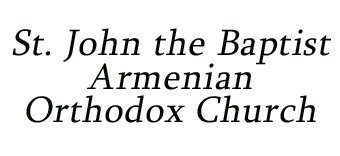Latest News & Articles
All the news that are relevant for our community
All the news that are relevant for our community
St. John Armenian Church of Milwaukee, WI, cordially invites you to the ordination of its pastor Rev. Deacon Albert Hambardzumyan. Saturday, April 10, 2021@10:00am. Celebratory Banquet @ 3:00 pm. The service will be livestreamed on church’s Facebook page.
On April 7, the Armenian Church celebrates one of her greatest feasts – the Annunciation to St. Mary. In the Gospel of Luke we learn that the Angel Gabriel brings the good news to the Virgin about the birth of the Savior (Lk 1:26-38).
“You are of God, little children, and have overcome them, because the one who is in you is greater than the one who is in the world” (1 John 4:4).
This verse from the first letter of St. John is a reminder of who we are and whose we are. We are not defined by the opinions of others. We are not defined by our past mistakes, our weaknesses, or our challenges. We belong to the Creator of the universe. The Almighty God has placed His Spirit inside us, and the One who is in us is far greater than anything we’ll ever face in this world.
Paul Sagsoorian was a familiar presence in the publications of the Armenian American community, especially in the New York area, but also an accomplished illustrator in non-Armenian circles.
He was born in New York on March 26, 1923, to a family from the village of Havav, in the district of Palu (province of Diarbekir–Dikranakerd). He graduated from the US Army’s mapmaking school during his three years of World War II service in the European theater of operations. He received a sharpshooter’s medal during a military trip to Iceland and a good conduct medal while in Europe. He worked on maps for mine-laying in Iceland and their removal in Normandy.
